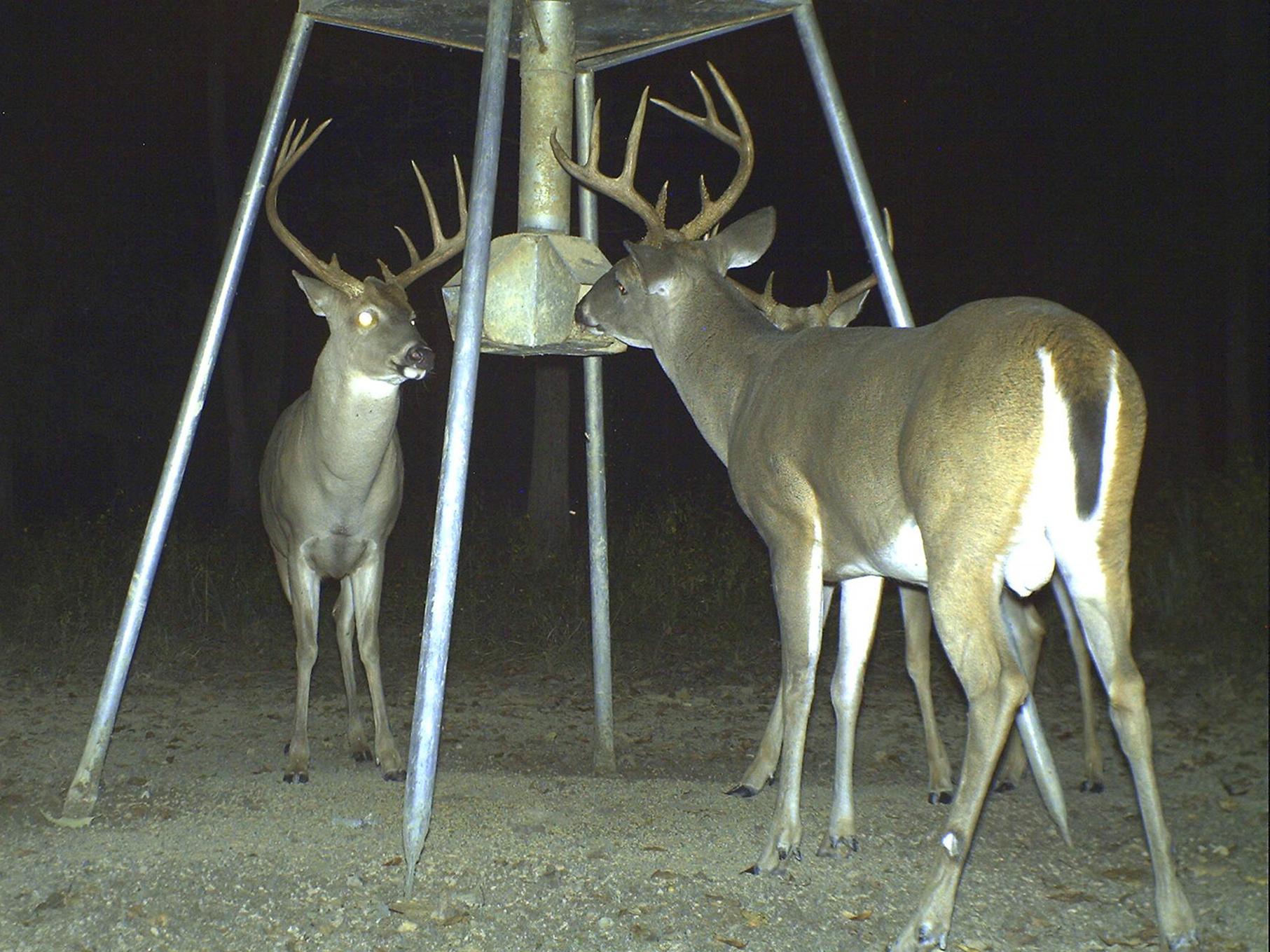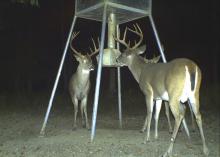Information Possibly Outdated
The information presented on this page was originally released on March 17, 2017. It may not be outdated, but please search our site for more current information. If you plan to quote or reference this information in a publication, please check with the Extension specialist or author before proceeding.
Hunters consider factors impacting deer sightings
By Bill Hamrick and Chad M. Dacus
MSU Extension Service
STARKVILLE, Miss. -- Some hunters complain about a lack of deer every year, but the concerns this season seem to be more widespread. Since early January, radio programs, newspapers and online forums have featured much discussion about hunters statewide seeing and harvesting fewer deer during the 2016-17 season.
Hunters question whether seemingly low deer numbers are caused by disease, excessive harvests, coyote predation or wild hog competition. Many variables affect deer populations, and some of these can have more of an impact at local levels.
Deer researchers at Mississippi State University and biologists with the Mississippi Department of Wildlife, Fisheries and Parks report that deer populations have not declined statewide. So, if there is no shortage of deer, then what’s the problem? There is no simple answer to this question, except “it depends.” From a statewide perspective, the answer is most likely not as complicated as you might think.
Mississippi experienced “one of those years” with some fairly mild temperatures during much of the recent deer season. Average temperatures for November, December and January were 58 degrees, 50 degrees and 53 degrees, respectively. In addition, there was an exceptional acorn crop across much of the state. With mild weather and abundant food, deer burn fewer calories to stay warm and have to travel less often and shorter distances to forage.
Another factor to consider is that it is now legal to feed corn all year and hunt over corn on private lands during deer season. Research has shown that baiting and/or supplemental feeding changes deer movements and distribution over the landscape.
One study in South Carolina showed the ratio of night visits to baiting sites versus day visits was 25 to one. Studies from Wisconsin showed that deer movement changed in heavily baited areas. Studies have shown similar results regarding food plot use where deer visits shift to nighttime use. So hunting over bait and/or food plots may actually lessen harvest opportunities.
Weather and/or baiting issues may be behind the lack of deer activity for most areas of the state this past deer season. However, there may very well be other factors in play at the local level in some areas. For example, some outbreaks of epizootic hemorrhagic disease, or blue tongue, usually occur in the state each year, but wildlife biologists reported this to be the worst year since 2012.
Fawn recruitment could be down due to coyote or even wild hog predation. It is also possible that wild hogs in some areas are outcompeting deer for food. Hunter harvest data from the last five years shows that deer harvest in the state is trending downward, while wild hog harvest is trending upward. This is certainly a strong indicator that wild hog populations are on the rise.
The bottom line is there are many different variables at play regarding both deer populations and deer movements. Here are a few recommendations:
-- Contact a wildlife biologist.
-- Conduct a camera survey to obtain deer population estimates.
-- Use exclusion cages on food plots to see how much they are used.
-- Use the MSU Deer Hunt app to record hunter observations and harvest data. Data collection will help you determine deer numbers on your property. If deer numbers are where they should be, change how and when you hunt.
 Editor’s Note: Extension Outdoors is a column authored by several different experts in the Mississippi State University Extension Service.
Editor’s Note: Extension Outdoors is a column authored by several different experts in the Mississippi State University Extension Service.

Editor’s Note: Extension Outdoors is a column authored by several different experts in the Mississippi State University Extension Service.










